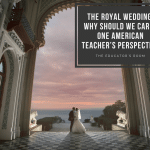Every year I collaborate with colleagues to host a high school field trip to a local college campus. We explore art collections, tour the campus and give students time to explore the nearby downtown for a brief respite. The goal of connecting artistic perspective to their interpretations of world history is tangential to the elation students enjoy with a day away from school. This encourages me to create a study planner for the art collections that guide students to and through analytical process without it seeming a chore. This year, I made it user friendly for the iPad or any mobile device. My colleague provided a similar paper packet giving us the opportunity to compare student engagement and presentation. I was witness to the transformative nature of student engagement with a mobile device and its plethora of applications.
Expectations for exploring a museum collection remained fairly traditional: construct an understanding of art and its significance to periodization, regions of the globe and its value based on style or function. Previous to our trip I sent a template for note taking, sample images and model analysis of particular art through a messaging app, Remind. Students downloaded the template into Notability with access to color and enlargement. Paper copies with black/white photos were no match.
Before embarking on the field trip we made certain that pairs of students shared at least one iPad and a stylus. To our dismay we discovered that the museum forbid the use of ink and paper for note taking. Luckily pencils were approved and provided allowing students to move freely throughout the collections on their own. Curators were on hand to answer questions and I moved about directing students to consider pieces that were favorites but mostly I observed. Students with paper struggled to write on hard surfaces or used each others backs. Students with iPads were able to snap images of the collection while recording their own audio in lieu of writing. Soon, a couple of students were shooting video as live reporters on the scene and others followed suite. Some students rehearsed their analysis and asked me questions before delivering a polished presentation. Great care was taken to record answers with accuracy thus students were reading art cues with greater intent. There was a real interest and an excitement in realizing that our yearlong studies added up to professional appreciation of art and its purpose as it has been preserved. A couple of students were sincerely excited to take home the images and the understanding of this for their own keeping. One student spent time getting just the right photo of an art piece to keep as the home screen on her phone. Her connection to art was her own regardless of my assessment.
When we finished, students with paper copies handed their work to the teacher. I took nothing. Some students found they could hand their audio or video in using the museum wifi but most wanted to review their work one more time at home. At a second exhibit of a famous mural I gave a brief lecture on the history presented, the intentions of the artist and their role in the art world. A more detailed audio tour did exist online and I offered the link to interested students. Wifi in the local cafe allowed for the download. Most students set aside their devices to enjoy time walking along the mural walls or to gaze from comfortable chairs. A few took a second trip through the piece and shot video opting to share this through Vine or Instagram. One student was particularly excited to capture the same image that her boyfriend had fallen in love with on a previous trip. As she texted him a selfie, he texted back with suggestions for analysis based on his memory of the trip. I discovered her searching the piece for particular details as if she was on a scavenger hunt. We overstayed our alloted time at this exhibit just because students were so engrossed in the layers of experiences this trip was providing.
Freedom, possibility and responsibility provide the framework for our annual field trip and that remained unchanged. By requiring students to present their experience using audio, imagery and expression we allowed for the take away experience to become transformative in ways I hadn’t really imagined. Students enjoyed the connections and interactions made at the art exhibit which they can take home to share with peers and family. I hardly need to assess their learning. The positives were written all over their faces.





